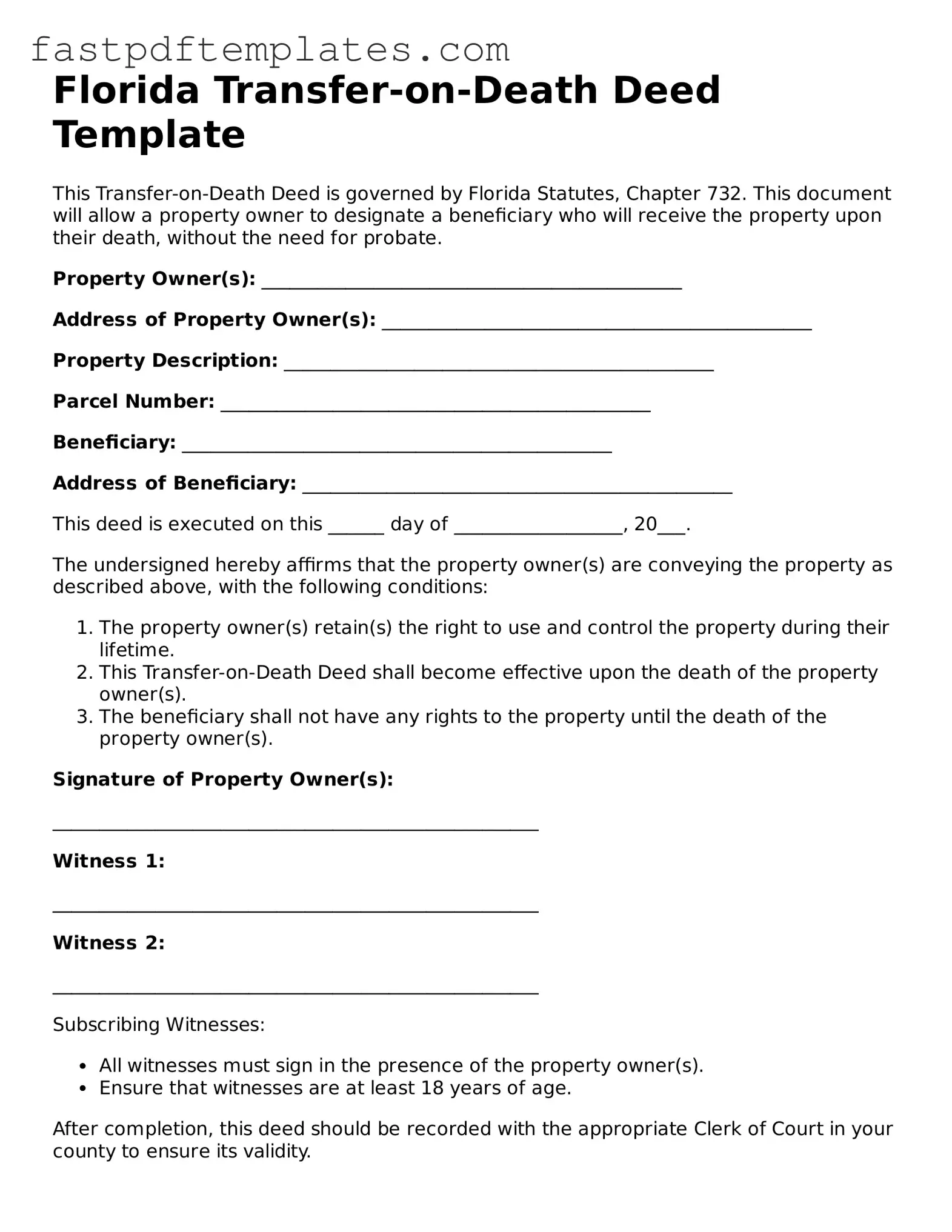Florida Transfer-on-Death Deed Template
This Transfer-on-Death Deed is governed by Florida Statutes, Chapter 732. This document will allow a property owner to designate a beneficiary who will receive the property upon their death, without the need for probate.
Property Owner(s): _____________________________________________
Address of Property Owner(s): ______________________________________________
Property Description: ______________________________________________
Parcel Number: ______________________________________________
Beneficiary: ______________________________________________
Address of Beneficiary: ______________________________________________
This deed is executed on this ______ day of __________________, 20___.
The undersigned hereby affirms that the property owner(s) are conveying the property as described above, with the following conditions:
- The property owner(s) retain(s) the right to use and control the property during their lifetime.
- This Transfer-on-Death Deed shall become effective upon the death of the property owner(s).
- The beneficiary shall not have any rights to the property until the death of the property owner(s).
Signature of Property Owner(s):
____________________________________________________
Witness 1:
____________________________________________________
Witness 2:
____________________________________________________
Subscribing Witnesses:
- All witnesses must sign in the presence of the property owner(s).
- Ensure that witnesses are at least 18 years of age.
After completion, this deed should be recorded with the appropriate Clerk of Court in your county to ensure its validity.
It is advisable to consult with a legal professional for guidance specific to individual circumstances before finalizing this document.
